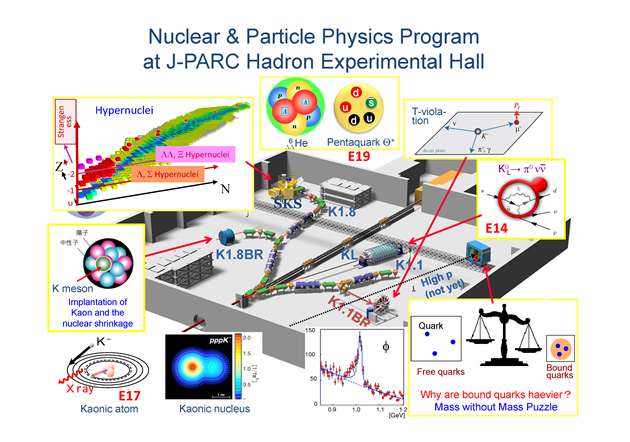Hey
I'm Jia Xu, fourth year physics graduate student in the University of Michigan. I'm currently working on a high energy experiment with the KOTO collaboration. My advisor is Professor Myron Campbell.
Scientific Project
Introduction
The KOTO collaboration is dedicated to measuring the branching ratio of long-lived Kaon $K_{L}$ rare decay process $K_{L}\rightarrow \pi^{0}\nu \bar{\nu}$. This is the golden mode to test the Standard Model by giving accurate measurement of the CKM matrix unitarity triangle. It is also very sensitive to some beyond Standard Models, like supersymmetry, $Z^{\prime}$ theories, warped higher dimensional model (Randall-Sundrum model) and the littlest Higgs models.Experimental Method
To get the Kaon beam at 2GeV energy level, we use the proton accelerator at Japan Proton Accelerator Research Complex (J-PARC) in Tokai-mura, Japan. J-parc websiteThe proton beam is accelerated at three stages: primary kick at linear accelerator (Linac); 3 GeV Synchrotron, and 30 GeV Synchroton. The 30 GeV beam is delivered to the Hadron Experimental Facility, and hit a gold target. Secondary particles include Pion, Neutron and Kaon, etc are produced. After a fine bean tuning via a collimator, a neutral pencil-sized beam is delivered to the KOTO experimental area. (Can you find where our detectors are located?)

Coming soon...
conferences
What's new
2013.05.23 One radiactive accident occured in the Hadron Experimental Hall in J-parc, so we need to stop data taking. Expected redeliver date: 2014 autumn.(~yeah, it's easy to feel the relativistic time dilation effect when it comes to fixing a high energy experimental gadget!)
2013.05.14 The detector starts to take physics data! Our goal for this run is a one month all-day beam deliver at 24KW beam power, and we hope to cross the Grossman Nir Bound!
Random Stuff
BTW, our decay's diagram and some math is on Sheldon's white board now! Besides, the Flavor Changing Neutral Current penguin diagram was shown back in Season01 Episode01! But that was a top quark to up or charm quark digram~
BTW, this is the piece of art that I generated with OpenGL within ~20 lines of code and <10ms of run time. Name it "Random Pixels".
![]()
Why do I like OpenGL
Email: jiaxu@umich.edu
